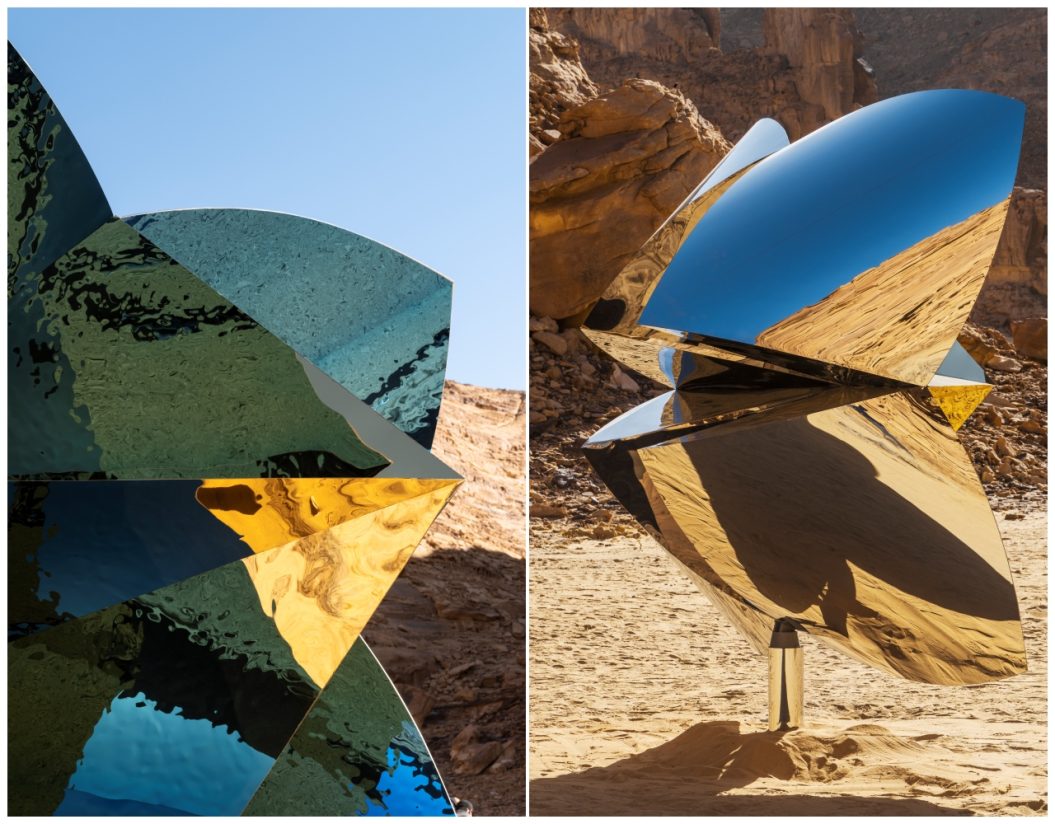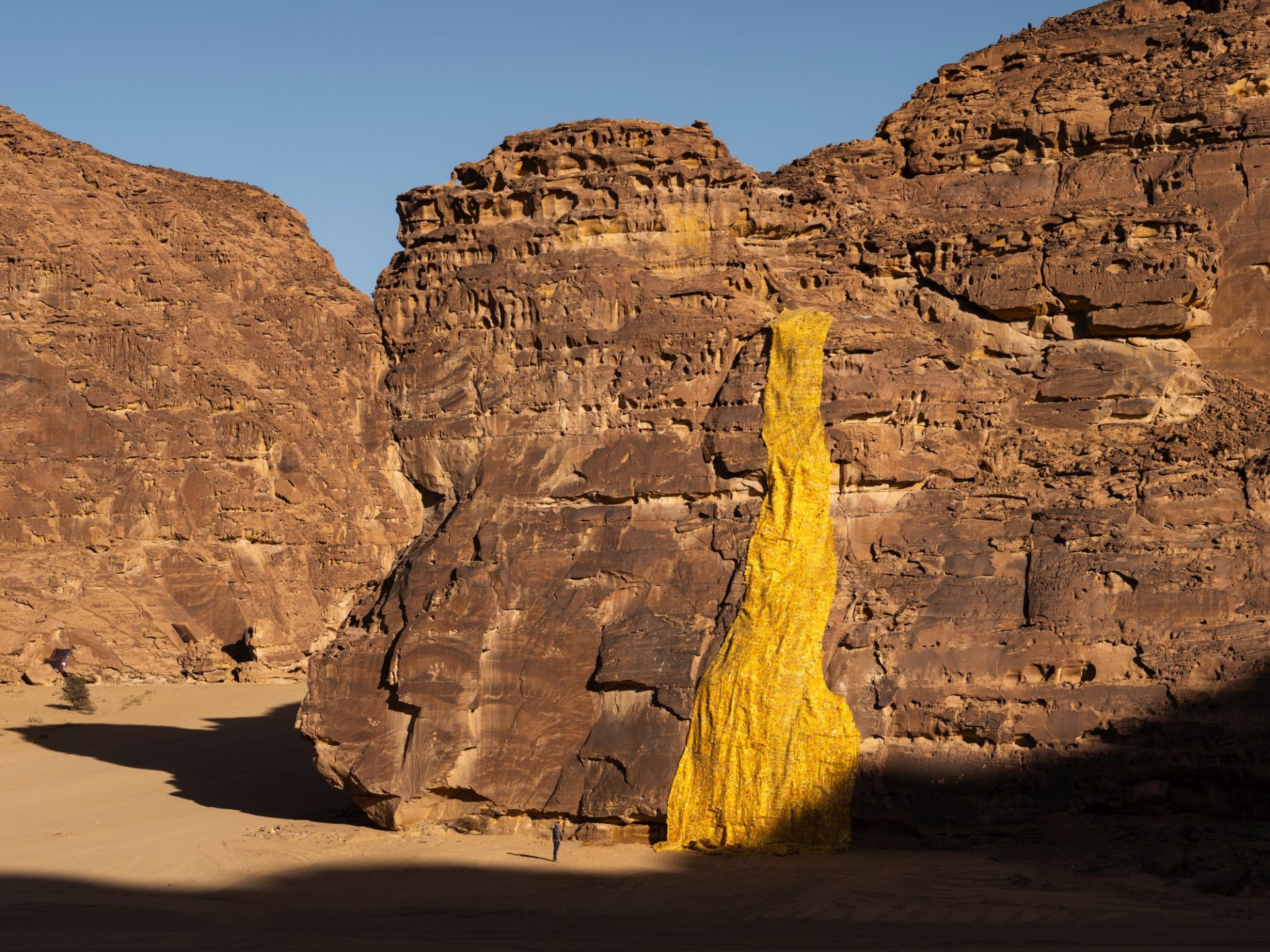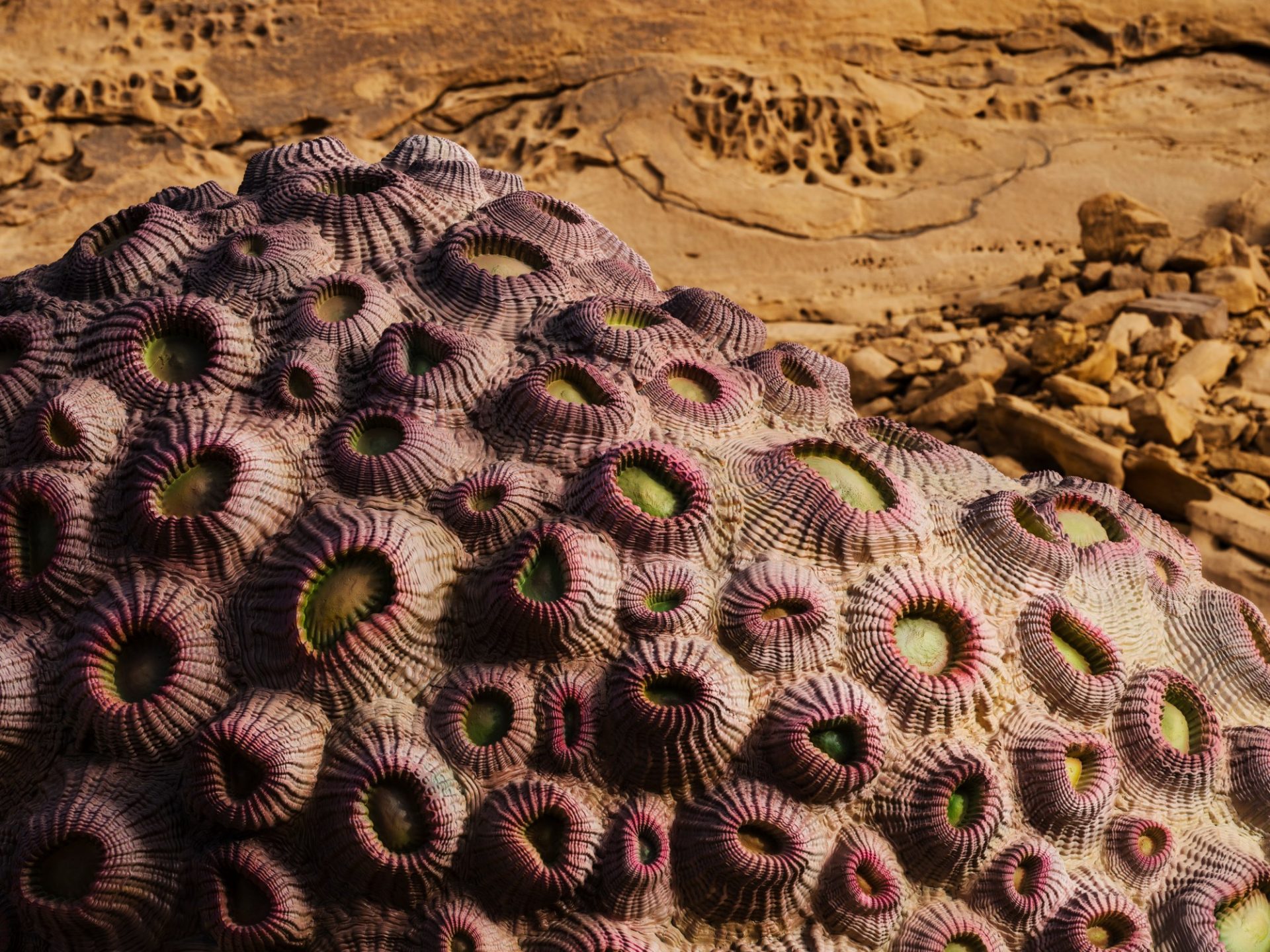Art Blends with Landscape on the AlUla Desert
Following its inaugural exhibition in 2020, Desert X AlUla returns for its second edition till 30 March 2022, placing contemporary artworks by 15 Saudi and international artists amidst the extraordinary desert landscape of AlUla, a majestic region in north-west Saudi Arabia of natural and creative heritage steeped in a legacy of cross-cultural exchange.

Sultan bin Fahad’s mud structure is shaped like a desert kite, with mirrors on the façade that create the look of a mirage, and houses an urn-like sculpture embossed with four protective symbols traditionally used in Nabatean tombs. Pic Credit: Sultan bin Fahad, Desert Kite, Desert x AlUla 2022, Courtesy the artist and Desert AlUla, photo by Lance Gerber
We are stunned by the cultural headways made by Saudi Arabia, with the most significant one being the preservation and the development of the AlUla region, a region of outstanding natural and cultural significance in north-west Saudi Arabia. What is significant is also the cultural celebration that is ongoing with the Al Ula project. Desert x AlUla is a recurring, site-responsive, international art exhibition taking place in this beautiful scenic locale. Artists, both local and international, come together to create site responsive and topic specific installations on the desert. From Land artist Jim Denevan’s mounds of sand following patterns that seem symmetrical and touches on our relationship with the scale of the desert to mud structures like a desert kite by Sultan bin Fahad, each installation aims to connect the visitors with the surroundings.
Under the theme of Sarab, the exhibition explores ideas of mirage and oasis, both intrinsic to desert history and culture, that have taken on complex worldwide significance over time. This year’s exhibition, under the curatorial vision of Reem Fadda, Raneem Farsi and Neville Wakefield, features newly commissioned works by 15 artists bringing a plurality of voices from around the world. It is difficult to decide which art works to focus on as each one of them are stark, touching on topics of preservation, desert life and environment and stand out for the immense contrast with the landscape, each one installation, better than the other.
“This year’s exhibition takes place in a different location in AlUla to the previous edition, situated in the Al Mutadil valley, with visitors invited to wander through and experience spectacular landscapes as they weave their journey between the works,” say the organisers.

Zeinab Alhashemi’s interactive sculpture uses discarded camel skins on an abstract, geometric base, resembling a rock formation in the desert; like a camouflage, these camels hide sculptures merge into the mountains. Pic Credit:Zeinanb Alhashemi , Camouflage 2.0 , Desert x AlUla 2022, Courtesy the artist and Desert AlUla, photo by Lance Gerber
“The desert concepts of mirage and oasis have long been tied to ideas of survival, perseverance, desire and wealth. The oasis pertains to ideas of finding prosperity or heaven, while the mirage is a universal symbol of the mysteries of imagination and reality. They also connote the incomprehensible beauty and abundance of nature in its most bereft state – the desert – and humans’ obsessive desire to capture and control it. Under the theme of ‘Sarab’, the artists presented in the exhibition – all of whom have spent time in the AlUla region – have developed ambitious and strikingly innovative, site- specific responses, all of which address profound issues, that emerge from the local context but also resonate with audiences the world-over.” Reem Fadda, curatorial advisor to Desert X AlUla 2022.
“Having worked for many years on the development and representation of the Saudi art scene, I can see that today Saudi artists are getting more attention and opportunities than ever before, both locally and internationally. Desert X AlUla plays a very important part in a vast wave of art and culture initiatives that is shaping the ecosystem for creativity in Saudi Arabia,” says Raneem Farsi, co-artistic director of Desert X AlUla.
Which one is your favourite of the installations at Desert X AlUla?

Shadia Alem, I have seen Thousands of Stars and one fell in AlUla, Desert x AlUla 2022, Courtesy the artist, Photo by Lance Gerber
Shadia Alem’s sculptural installation adapts the art of origami, applying the basic principles of geometry and beauty to create shapes that make reference to the Arabian desert’s literature, mathematics and mythology.
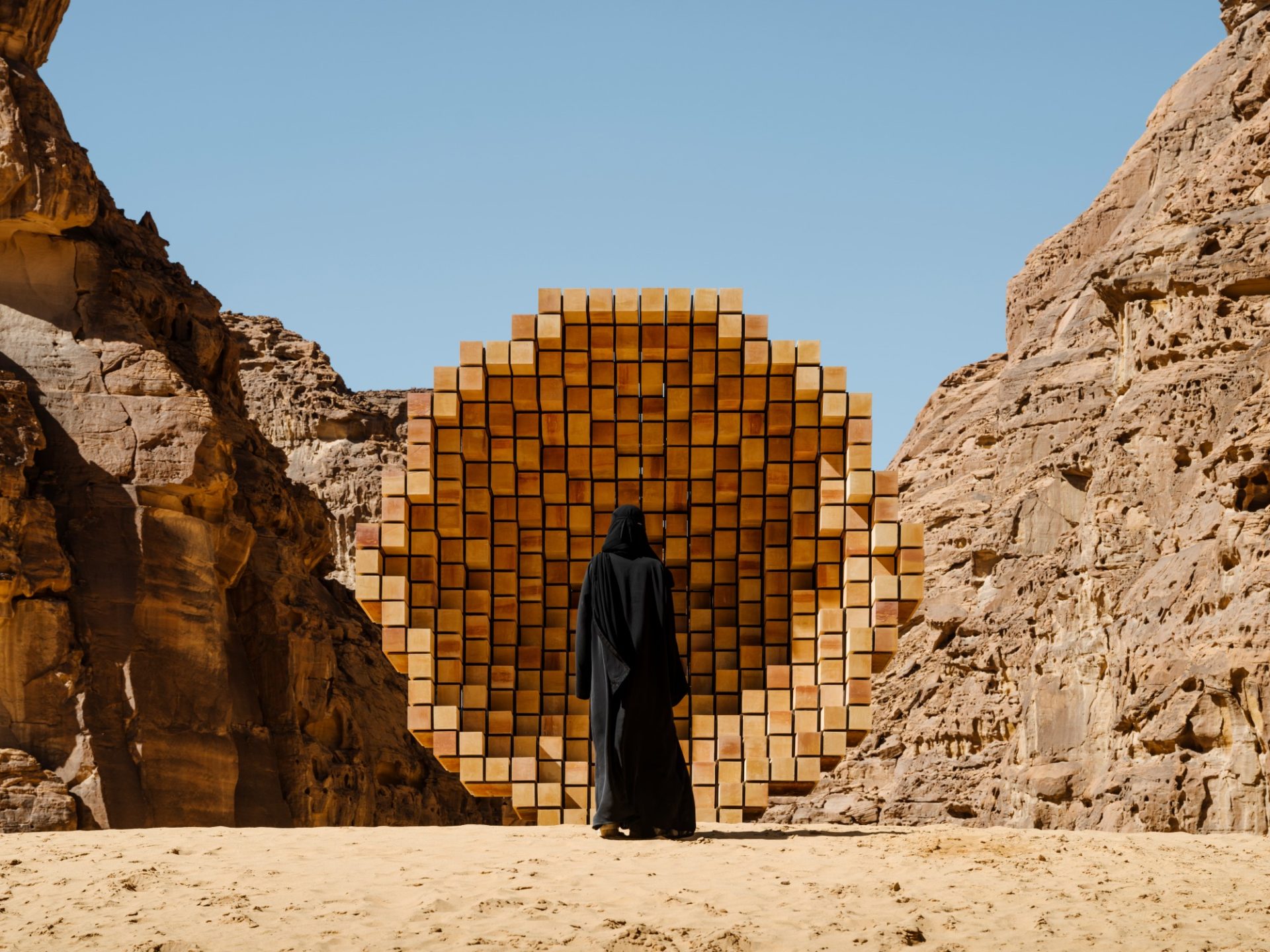
Dana Awartini, Where the Dwellers Lay, Desert x AlUla 2022, Courtesy the artist, Photo by Lance Gerber
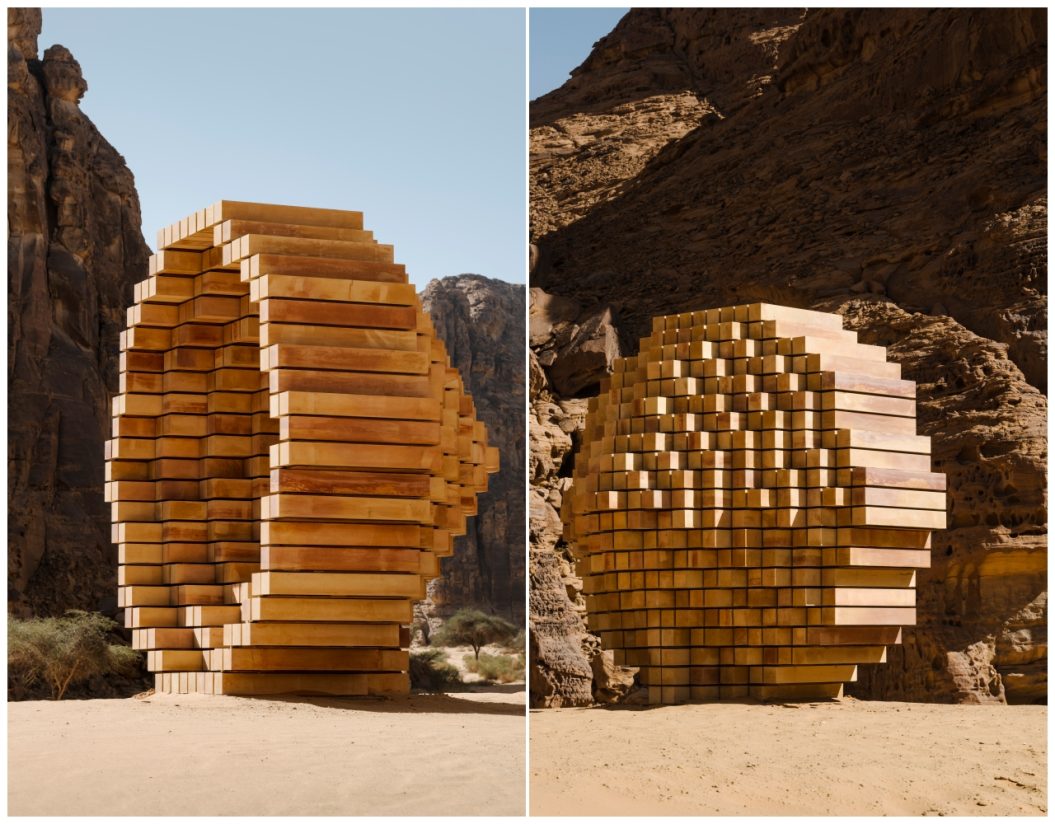 Dana Awartani’s sculpture draws inspiration from the vernacular architecture of AlUla, taking the form of a concave geometric sculpture that references the Nabataean tombs and mimics the shapes of surrounding mountains, gorges, caverns and rock formations.
Dana Awartani’s sculpture draws inspiration from the vernacular architecture of AlUla, taking the form of a concave geometric sculpture that references the Nabataean tombs and mimics the shapes of surrounding mountains, gorges, caverns and rock formations.
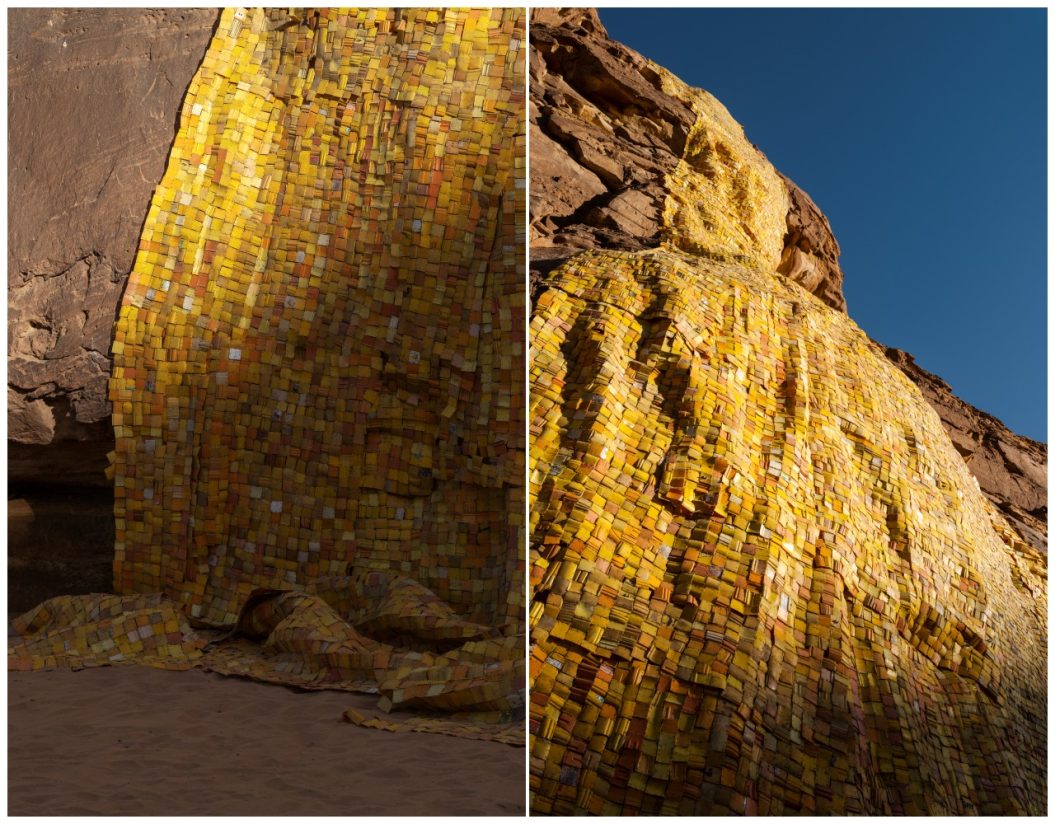 Serge Attukwei Clottey’s installation addresses the experience of globalisation, migration and water equity by shrouding slabs of rock in meticulously crafted tapestries made from yellow kufuor gallons, which are plastic containers used in Ghana for storing and transporting water.
Serge Attukwei Clottey’s installation addresses the experience of globalisation, migration and water equity by shrouding slabs of rock in meticulously crafted tapestries made from yellow kufuor gallons, which are plastic containers used in Ghana for storing and transporting water.

Claudia Comte, Dark Suns, Bright Waves. Desert x AlUla 2022, Courtesy the artist, Photo by Lance Gerber
Claudia Comte’s work features a progression of walls imposing their architectural presence within the natural order of the AlUla canyons, with each carrying a section of a larger algorithmic pattern relating to the waveforms that shape the sound and surface of the desert.
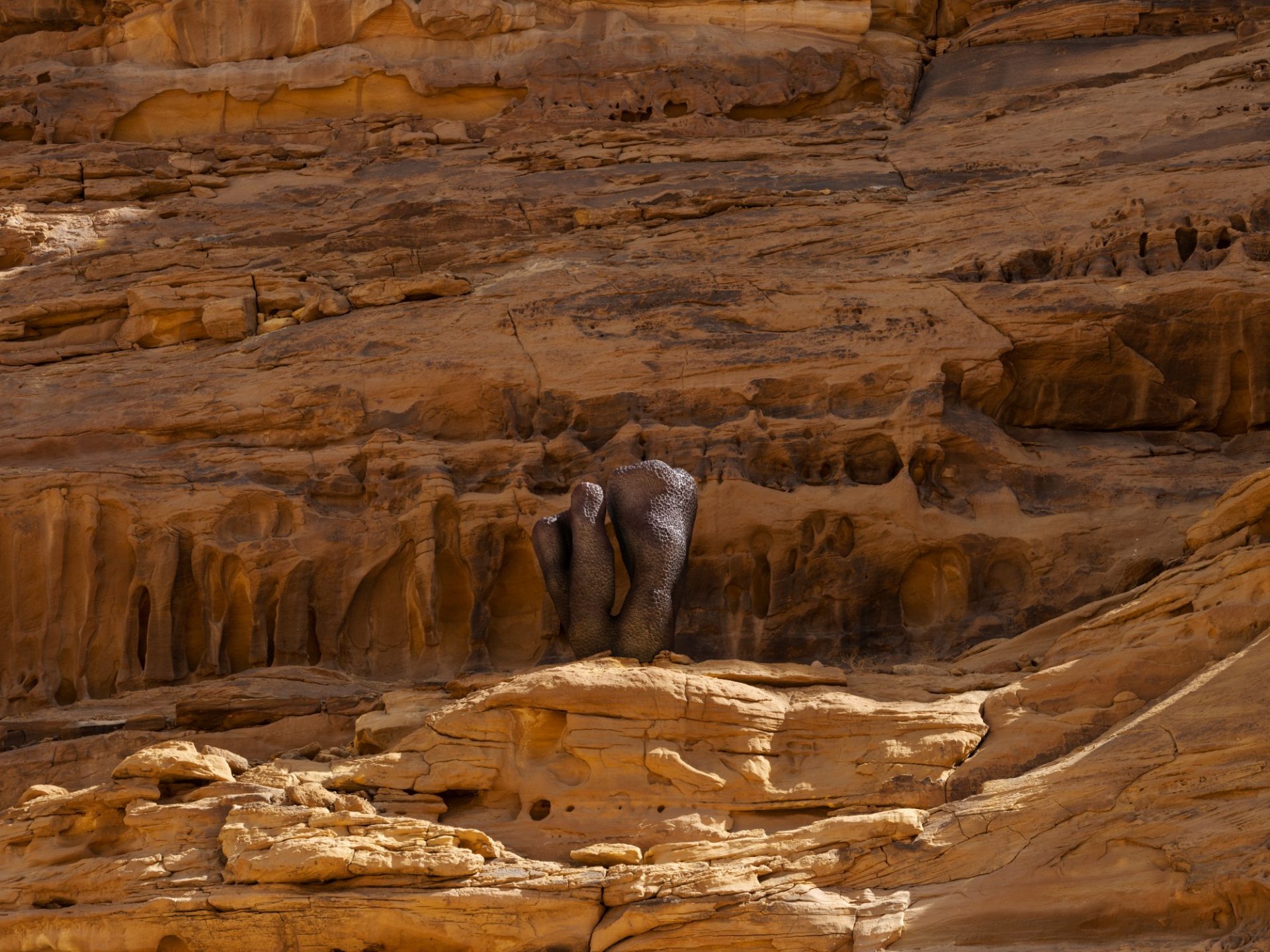 Shezad Dawood’s work explores ideas of deep time and the geo-biological relationship between the desert floor and nearby Red Sea through a pair of coral-like forms whose temperature-sensitive surfaces reflect the effects of climate change and mankind’s continuing struggle to find a sustainable relationship with a rapidly changing ecosystem.
Shezad Dawood’s work explores ideas of deep time and the geo-biological relationship between the desert floor and nearby Red Sea through a pair of coral-like forms whose temperature-sensitive surfaces reflect the effects of climate change and mankind’s continuing struggle to find a sustainable relationship with a rapidly changing ecosystem.
Land artist Jim Denevan creates ephemeral drawings whose interlocking patterns speak to the shifts in magnitude and scale that so often shape our experience of the desert and our attempts to position ourselves within the vastness of unbounded space.
Working at the intersection of nature and technology Stephanie Deumer has created an underground greenhouse; hinting at the lush sanctuary of native plants below, a large puddle-shaped array of solar panels mounted flush with the desert floor creates an energy feedback loop where the energy of the sun is captured, stored and transformed through photosynthesis into growth and transformation.
Sultan bin Fahad’s mud structure is shaped like a desert kite, with mirrors on the façade that create the look of a mirage, and houses an urn-like sculpture embossed with four protective symbols traditionally used in Nabatean tombs.
Zeinab Alhashemi’s interactive sculpture uses discarded camel skins on an abstract, geometric base, resembling a rock formation in the desert; like a camouflage, these camels hide sculptures merge into the mountains.
Alicja Kwade’s architectural structures reflect and frame the natural artefacts she encountered on the desert floor, which she rearranged and supplemented to create constantly changing perspectives that strike the fine line between reality and illusion.
Shaikha Al Mazrou’s lengthy steel-made inflated structures are wedged in the voids of rocks, tensely balanced in the landscape, occupying the liminal state between stasis and movement, creating a silent yet imposing composition suspended in inertia.
Abdullah AlOthman’s piece references theories of light refraction rooting back to the early days of desert civilisation and culture, with stainless steel plinths that interact with the light and create a radiant space that seeks to manifest the experience of capturing the mirage for the first time.
Khalil Rabah creates a mirage of an orchard of olive trees, which stand here in the desert as living things displaced from their indigenous land and longing to be repatriated, as an exploration of territory, survival and citizenship.
Monika Sosnowska’s sculptural exploration of memory speaks to AlUla’ s historical position as a hub and passage of trade and its more recent cultural re-awakening; using heritage rails from the Hejaz railway, that ran from Damascus to Medina, the linear steel forms have been transformed into giant dried grasses replete with possibilities of growth and transformation.
Ayman Zedani’s soundscape installation in a rocky cavern comprises horizontal sculptural wires and an audio projection of music, voices and footsteps, creating a cacophony of sounds that add to the chimes of nature.
Desert X AlUla aims to contribute to and continue the artistic heritage of the local community and region: works from the 2020 edition by Lita Albuquerque, Manal AlDowayan, Sherin Guirguis, Mohammed Ahmed Ibrahim, Nadim Karam and Superflex remain in place in AlUla, on view from sustainable hotel Habitas, while Rashed AlShashai and Muhannad Shono were selected to work as part of AlUla’s first artist residency, an 11-week programme whose final exhibition, The Oasis Reborn, is on display in the palm grove of Mabiti until 31 March.
Home to the UNESCO World Heritage Site, Hegra, built by the Nabataeans over 2,000 years ago, the AlUla region has been at the crossroads of cultural exchange for millennia, historically lying on the incense trade route and once capital to the ancient Kingdom of Dadan. Today, it is a living museum of heritage, arts and nature, rekindling its legacy as a vital cultural destination.
By reimagining the boundaries of creativity and ingenuity, AlUla aims to share the transformative power of the arts through the prism of AlUla’s legacies, character and ambition, share the creators.
All Images Courtesy Desert x AlUla
Photography Courtesy: Lance Gerber


